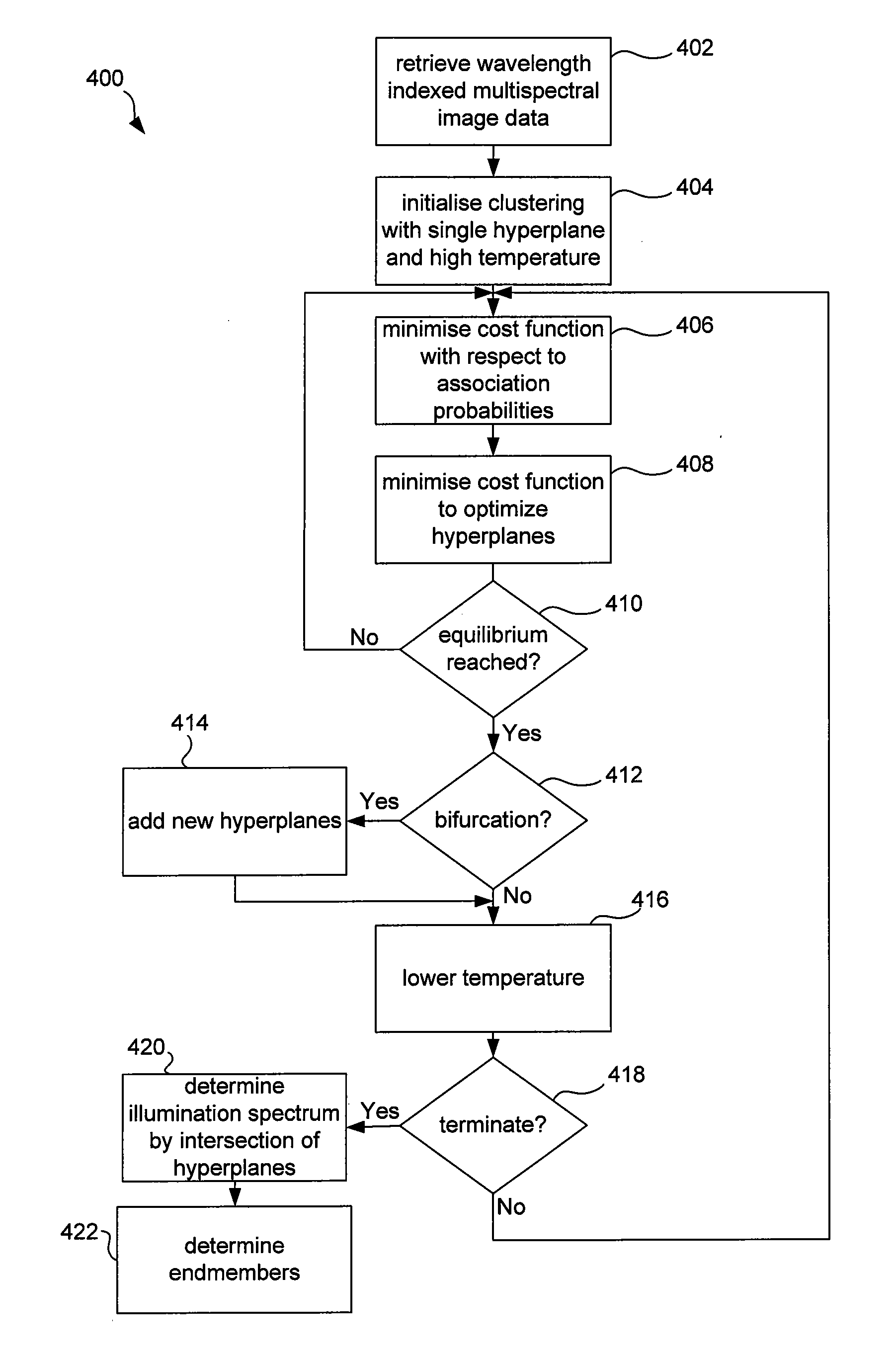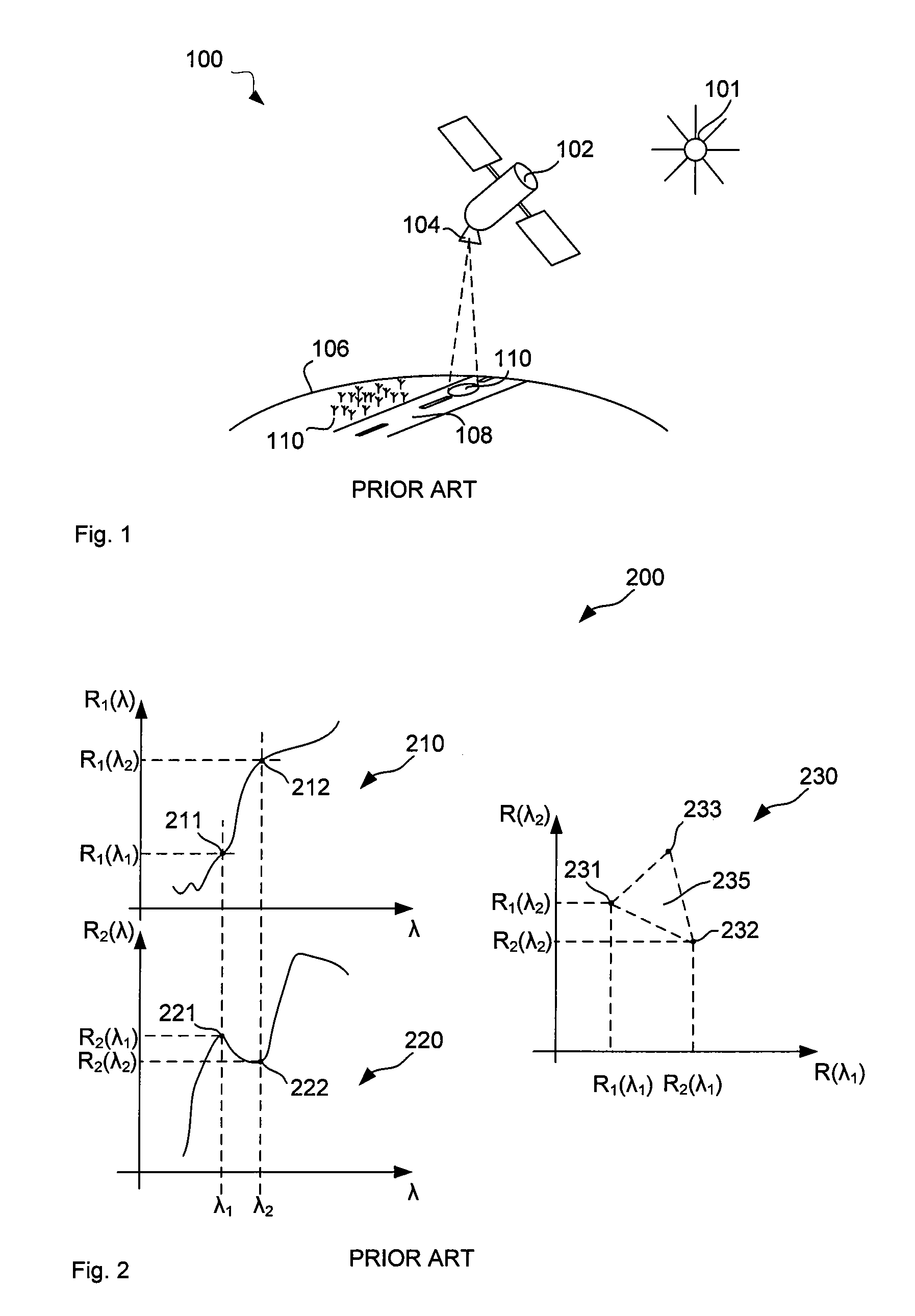Decomposing hyperspectral or multispectral image data
a multi-spectral image and data technology, applied in the field of electronic image processing, can solve the problems of difficult determination of the underlying endmember, inability to use methods, and difficulty in finding any underlying spectra in the radiance spectra, and achieve the effect of greater us
- Summary
- Abstract
- Description
- Claims
- Application Information
AI Technical Summary
Benefits of technology
Problems solved by technology
Method used
Image
Examples
Embodiment Construction
[0077]FIG. 3 illustrates a computer system 300 for determining basis spectra, that is underlying independent spectra, of wavelength indexed image data and decomposing the image data into the underlying spectra. Computer system 300 comprises a sensor 302 and a computer 304. In this example the sensor 302 is a hyperspectral or multispectral sensor that is able to capture an image of a scene 305, in this case the earth illuminated by the sun.
[0078]In one example, the computer system is integrated into a satellite orbiting the sun. In other examples the computer system is integrated into a handheld device such as a consumer camera and the scene 302 may be any scene on the earth, such as a tourist attraction or a person. The scene may also be illuminated by multiple artificial light sources, such as fluorescent lamps. The sensor 302 may have a number of bands that balances computational costs with accuracy. The sensor 302 may have as low as four bands and as high as hundreds.
[0079]The co...
PUM
 Login to View More
Login to View More Abstract
Description
Claims
Application Information
 Login to View More
Login to View More - R&D
- Intellectual Property
- Life Sciences
- Materials
- Tech Scout
- Unparalleled Data Quality
- Higher Quality Content
- 60% Fewer Hallucinations
Browse by: Latest US Patents, China's latest patents, Technical Efficacy Thesaurus, Application Domain, Technology Topic, Popular Technical Reports.
© 2025 PatSnap. All rights reserved.Legal|Privacy policy|Modern Slavery Act Transparency Statement|Sitemap|About US| Contact US: help@patsnap.com



